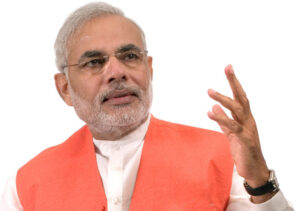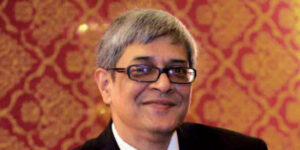How we can put Indian Railways back on track
Every Indian, I’m sure, has an incredible romantic railway memory. Remember the scene in Satyajit Ray’s Pather Panchali (Song of the Little Road, 1955), the breathtaking milestone of world cinema, where we see the boundless joy on the faces of Apu and Durga when they are sprinting through kash fields to see the oncoming train? The sight of the train filled the brother-sister duo with utter delight. The portrayal of the kids’ wonderment has been Ray’s master stroke and a cinematic tour de force.
Well, the memories of happy journey have faded into oblivion after successive central leaderships have jerry-rigged things resulting in a massive mess for the ‘nation’s lifeline’.
On assuming power, however, Prime Minister Narendra Modi has promised to modernise India’s railways and build high-speed trains befitting Asia’s third-largest economy.“Why do our rail stations need to be so old, why can’t they be better than our airports?” he said.
Modi’s dogged determination to turn this slow, uncomfortable and unsafe railway network into a faster, high-tech driven and reliable transport system deserves accolades. Doubtless, the task is daunting and Herculean. And there’s no silver bullet to turn India’s deplorable rail network into a top-class performer. But, if we have the will, we can turn the impossible into a reality.
Sneaking a peek into history
Indian Railways (IR) is the world’s seventh largest commercial or utility employer, by number of employees, with over 1.307 million employees according to figures last published in 2013.
According to the International Union of Railways data, the US has 224,792km, China has 103,144km, Russia has 128,000km and India has 64,460km network. Among the top ten countries in the world, eight have nationalized railways, the US and Canada being the only exceptions.
India’s first commercial passenger train travelled from Bori Bunder to Thane (then Tannah) on 16 April, 1853. IR is the fourth largest network in the world with a route of 65,436 km and 7,172 stations. In 2014-15, IR carried 8.397 billion passengers annually or more than 23 million passengers a day (roughly half of whom were suburban passengers) and 1050.18 million tons of freight in the year.
It is, however, regrettable that if one wants to travel by train in India, one must plan at least 90 days in advance. Or else, it’s almost impossible to get a ticket as capacity is abysmally poor. Besides, service is deplorable and unsafe, even though the railway is ridiculously over-staffed.
Bibek Debroy-led panel report
In his article in an English daily, Gurcharan Das, former CMD, P&G (India) has rightly pointed that “the root problem is that railway remains a state monopoly and is starved by politics of investment and technology and prevented by a pernicious departmental structure from becoming a modern, vibrant enterprises”.
I remember I travelled from Venice to Vienna on Eurail. The train left Venice at 8.05a.m. and arrived at Vienna at 5:00 p.m. The service was incredibly splendid and I was overwhelmed by the train’s on-time performance.
While traveling from Beijing to Shanghai by a high-speed train, what struck me particularly was its punctuality and on-time performance. The competence and efficiency of the Chinese railway network is astounding.
When can we have similar rail service in India? Can’t the rail authority ensure on-time train service?
The Bibek Debroy-headed panel, which was set up on 22 September 2014 to suggest ways to restructure the railways, came up with some drastic reforms on 31 March, 2015.The Interim Report is now on public domain so that comments can be received from everyone and not only from the people within the Railway system or Railway Ministry.
The panel recommends private players to run passenger as well as freight trains, producing coaches, wagons and locomotives and switching over to commercial accounting of railway functions.
The high-powered panel (in its interim report submitted on 31 March, 2015) has also asked the national transporter to withdraw from welfare services such as running schools and hospitals and managing the Railway Protection Force (RPF).
According to the interim report, “This committee will use the word liberalization and not the terms ‘privatization’ and ‘deregulation’, as both of these two terms are apt to be misunderstood.”

The committee, however, clarifies that it doesn’t recommend privatization of railways, except in very specific non-core segments.
The committee suggests setting up of a government SPV (with a possibility of disinvesting in the future) to own railway infrastructure, and delink it from the railways. It suggested an Indian Railway Manufacturing Company to replace all existing production units and another holding company for railway stations.
The panel also says that the rail ministry should only determine policy and not indulge in day-to-day operations of the railways. The ministry should set policies for open access and the framework for the Railway Infrastructure Company, determine the policy for raising resources for social cost obligations, extend the railway network and offer on-budget and targeted subsidies to poor passengers who need them.
It also recommends only one ministry of transport in the future.
When Mamata Banerjee was the rail minister, the Kolkata Metro Rail Corporation was brought under the railways; the panel favors detaching it from the railways.
“The core function of Indian Railways should be the business of running trains,” the panel says, suggesting pruning of group C and D staff as it finds a shortage of personnel in the core, skilled operations of running trains.
The panel urges delinking of RPF from the railways, handing over railway schools to Kendriya Vidyalaya Sangathan and pruning of railway medical services.
The panel suggests empowering zonal railways and making them autonomous; the railway board should have no role to play in their day-to-day functioning while policies are determined by the rail ministry.
The railway board must become like a corporate board for railways. The chairman should be like a CEO. He/she should not be the first among equals and should, therefore, have the power of final decision-making and veto (in case of divided view). The composition of the Board should have member (traction and rolling stock), member (passenger and freight business), member (HR and stores), member (finance and PPP), member (infrastructure) and two outside, independent experts, the panel says.
An individual should be appointed as chairman or member only if he/she has at least three years of service left. This clause should also apply while appointing a general manager.
Noting that the present railway board is saddled with excess manpower with 1,107 officers, the panel recommends the merging of Railway Board Secretariat Services (RBSS) or the Railway Board Clerical Services (RBCS) and Central Secretarial Services.
The panel suggests leveraging land banks, airspace above stations, and other assets to raise capital with the help of investment banks to become a healthy, commercial enterprise.
Competition will lead to better, cleaner and safer services and happier customers. Insulated from politicians, rail employees will be more motivated and accountable.
The bonuses, the report says, will be linked to profitability, while pension will be protected by the state.
What a novel, innovative and revolutionary report!!
Kudos to those who toiled and slogged over the past nine months to give shape to this report!
True, government should govern and not run businesses. If the railway wants to make a turnaround, the Modi government must not dither and must implement these suggestions to put the railways back on track without delay.
Hope we Indians will soon cruise from the bewitching beaches in Kerala to snow-capped Himalayas in Himachal and from the deserts in Rajasthan to the captivating coasts in Odisha/Andhra Pradesh by swanky and comfortable trains savoring India’s infinite natural splendor.

